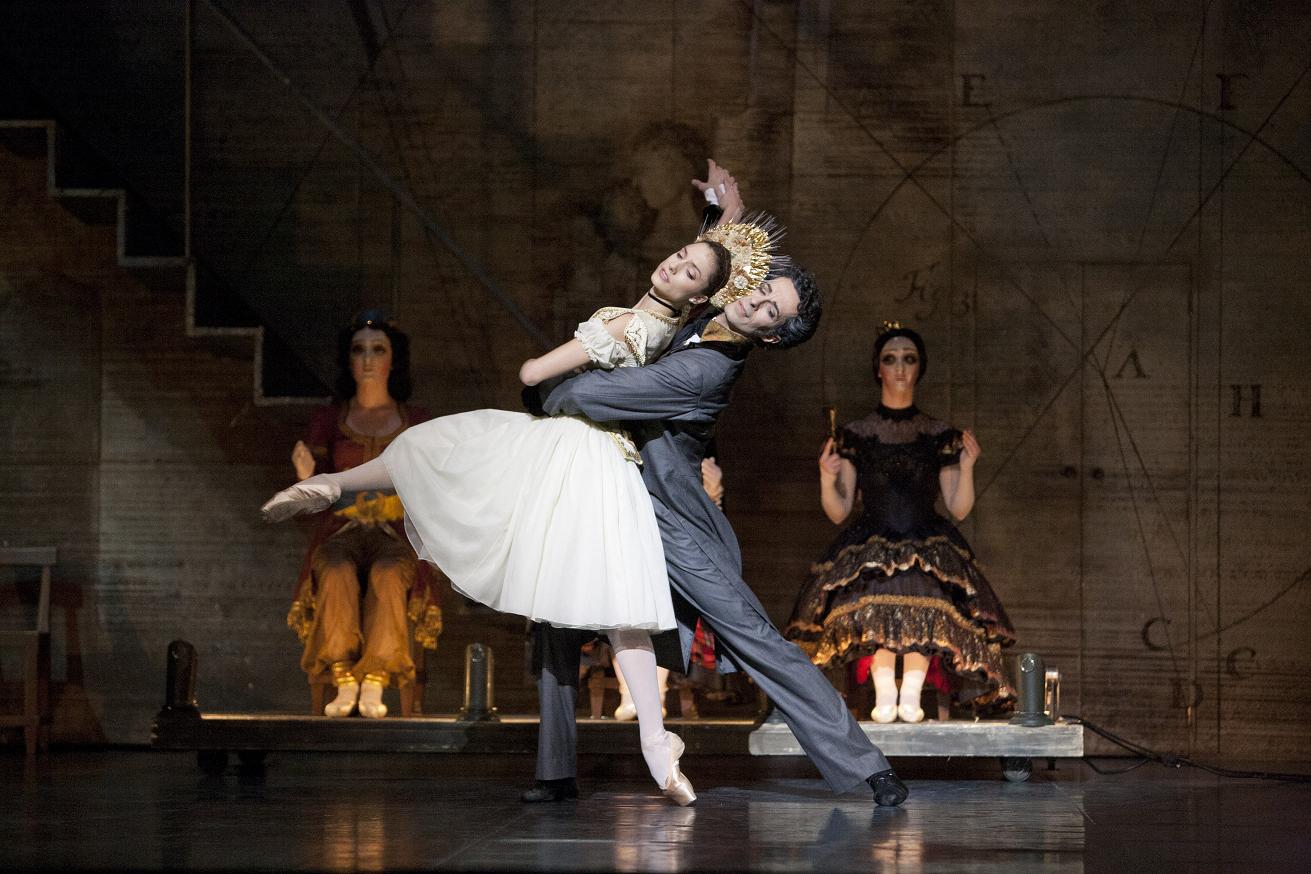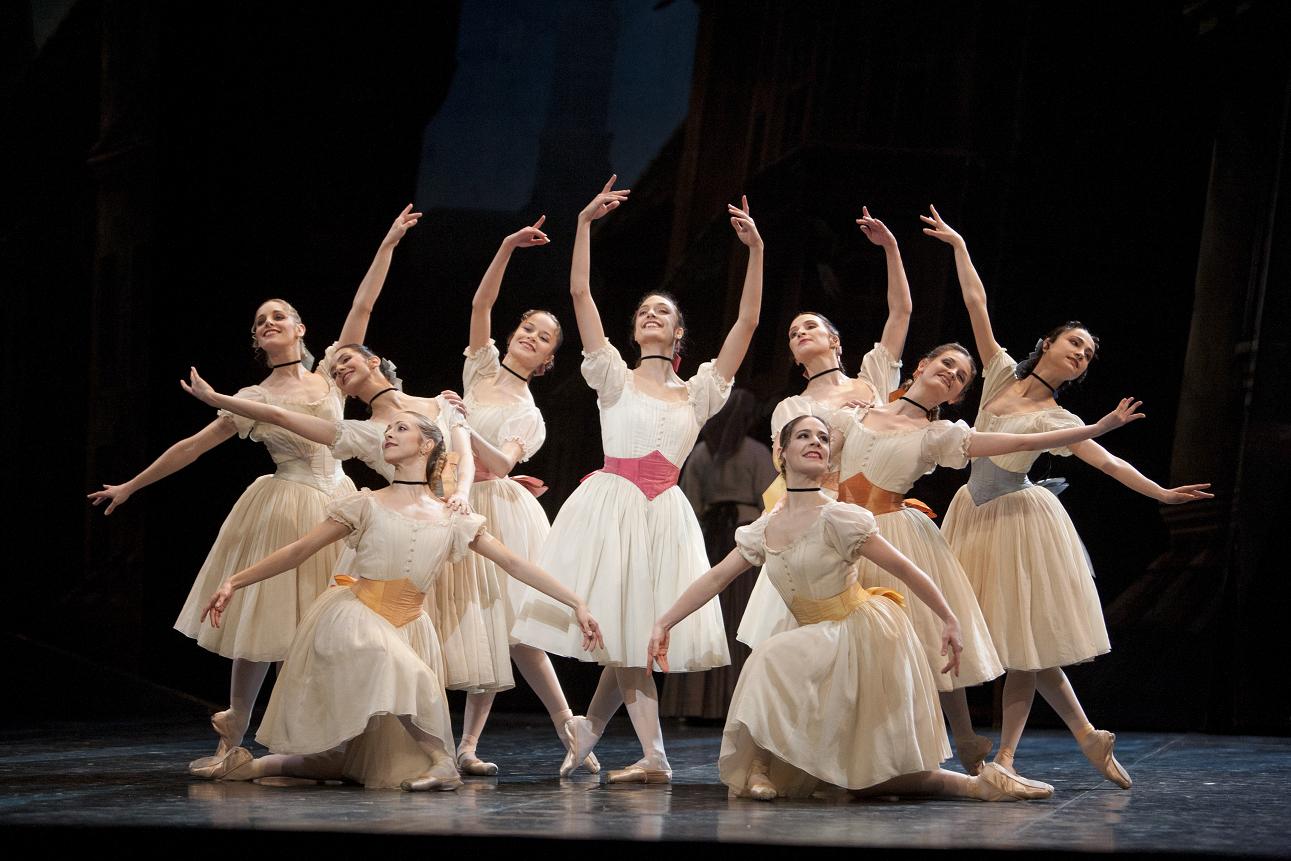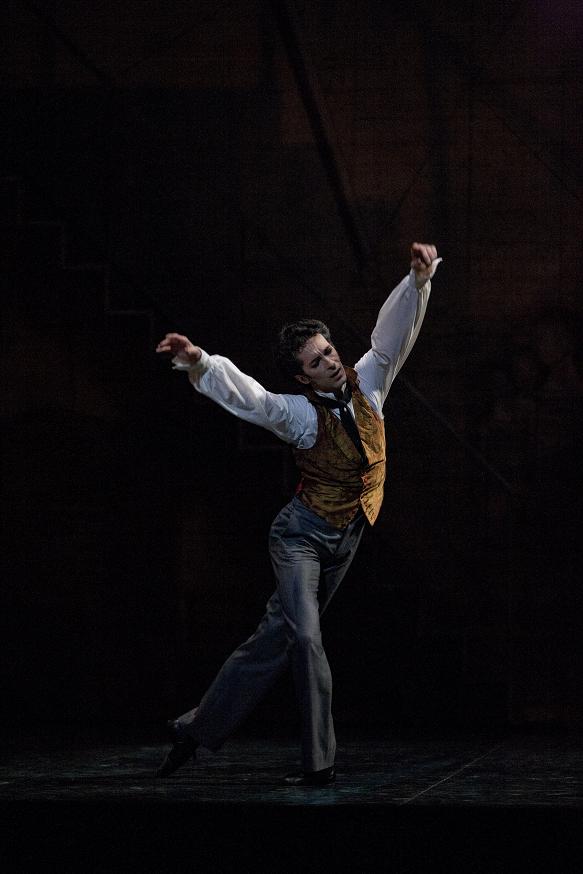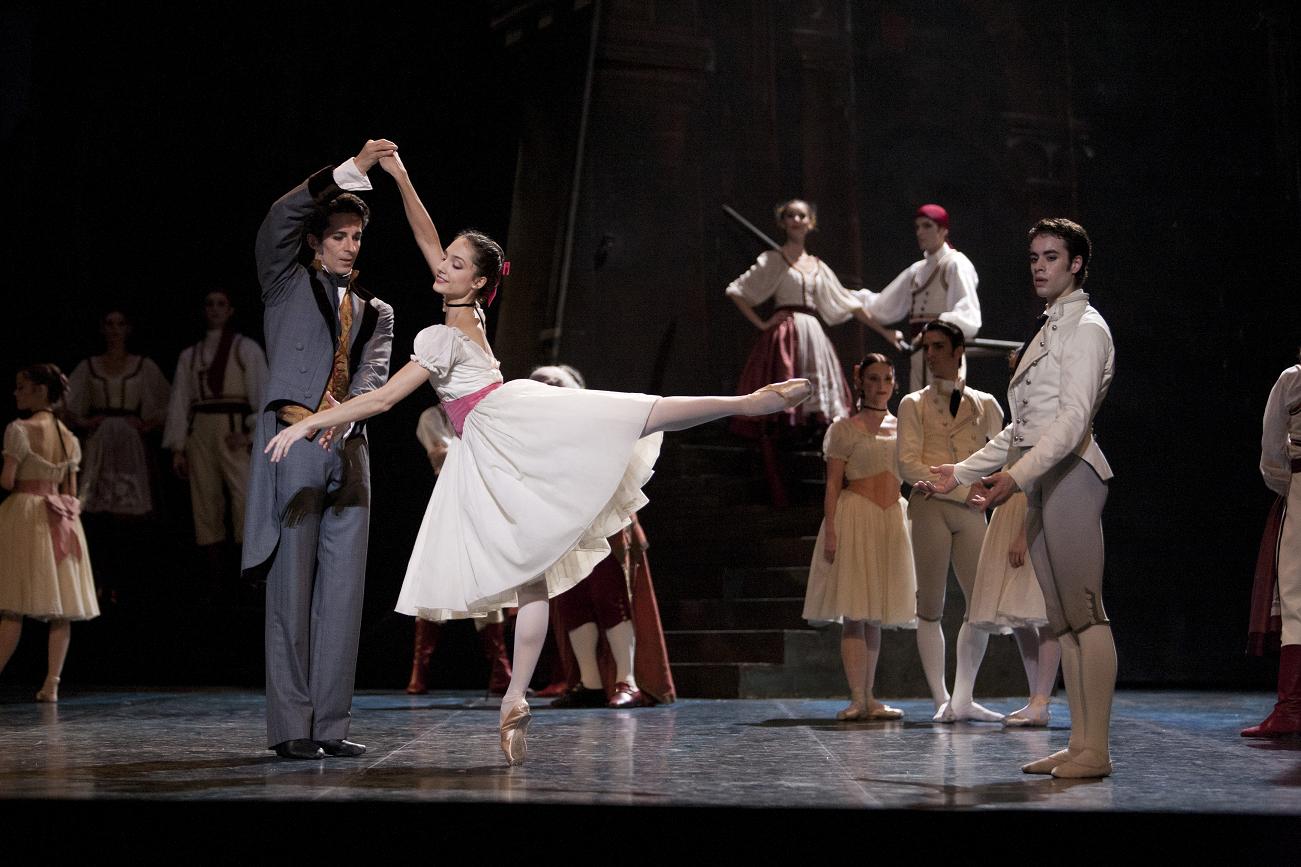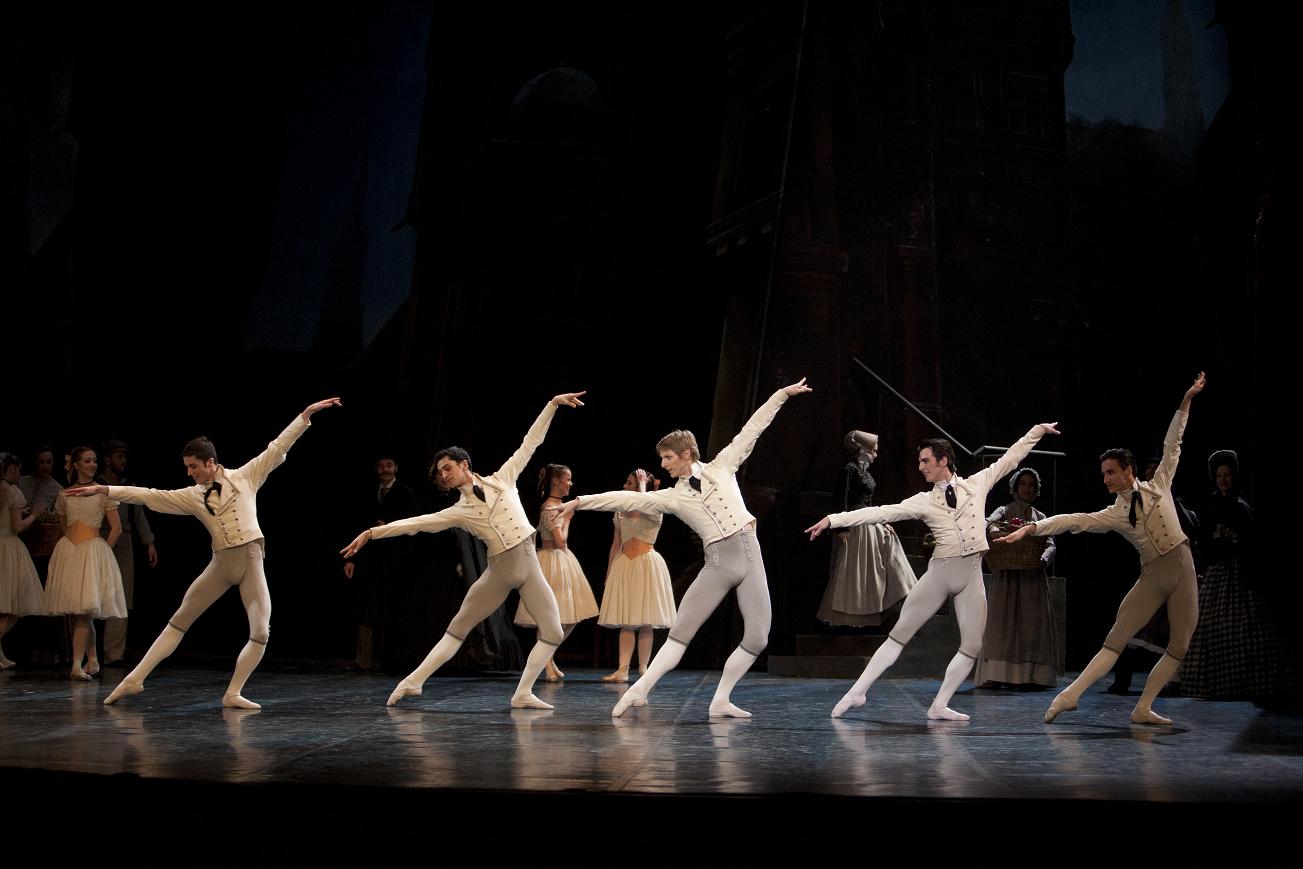COPPELIA from Palais Garnier at Mezzo
By Henning Høholt on 4/03/12 • Categorized as Ballet
Dorothée Gilbert as Swanilda, Mathias Heymann as Frantz, José Martinez as Coppélius and Fabrice Bourgeois as Spalanzani are heading the splendid cast from the Ballet from Opera de Paris in their performing of the wonderful ballet Coppélia, together with Corps de Ballet de l’Opéra National de Paris, Patrice Bart (Chorégraphy), and the wellknown music splendid played by Orchestre Colonne, conducted by Koen Kessels. The production which is presented at Mezzo was enregistrated at Palais Garnier, Paris, mars 2011. TV realisation by Vincent Bataillon.
Review by Henning Høholt
Coppelia is a charming, funny ballet full of humor and ballet mime. It is often performed by small ballet companies because it doesn’t require a large cast of roles. But in the Paris version by Patrice Bart (Chorégraphy) it is a large version we are getting, and it suits in deed this ballet very well. It gives us the possibility to enjoy all the famus musical parts well danced. In the Paris version i feel that I am at home. They have all the famous numbers included in the ballet, and they are dancing splendid. Susch as the Czardas in its very full, the Mazurka. The famous Valse Lente with a lot of danseuses. Dance of the hours. In the second act we of course enjoy the Waltz of Coppelia, brilliant performed by Dorothée Gilbert. elegantly danced together with three of the female “dolls” in doctor Coppelius atellier.
I am use to that dr. Coppelius is danced by an old dancer, but in the Patrice Bart version he is letting a young dancer, José Martinez be Coppelius, but assisted by an old doll maker, this is giving new possibilityes, as José Martinez can participate with many great soloparts allready in the first act, and in ensembles and pas de deux with the one he think is his doll Coppelia, (Dorothée Gilbert) and with Swanhilda (Dorothée Gilbert). Her Reel is virtuose. This idea gives the Paris Coppelia a special dimension.
Mathias Heymann has as Frantz several wonderful solo parts, as forexempel his brilliant and demanding entre in to the atellier of Coppelius, where he save Swanhilda, and bring her out to the dream world. where they have their final love pas de deux. A version, that I have not seen earlier, but it functions very well, which brings her out to the streets of her home city, and she is saved. However, I am missing the part of Coppelia, where in the studio of Coppelius, he is trying to get Frantz drunk, so he can steel his heart and soul. This detail is of dramatic importence for understanding the history. But as allways, Coppelias basement gives the possibillity to several versions. Furthermore, i missed the last act with the wedding scene.
The basic is as follows: Coppélia is a sentimental comic ballet with original choreography by Arthur Saint-Léon to a ballet libretto by Saint-Léon and Charles Nuitter. It was based upon two macabre stories by ETA Hoffmann, Der Sandmann (The Sandman), and Die Puppe (The Doll).
Coppélia concerns an inventor, Dr Coppelius, (José Martinez ) who has made a life-size dancing doll. It is so lifelike that Frantz, (Mathias Heymann) a village swain, becomes infatuated with it and sets aside his true heart’s desire, Swanhilde (Dorothée Gilbert). She shows him his folly by dressing as the doll, pretending to make it come to life and ultimately saving him from an untimely end at the hands of the inventor
.
The story begins during a town festival to celebrate the arrival of a new bell. The town crier announces that, when it arrives, anyone who becomes married will be awarded a special gift of money. Swanhilde and Franz plan to marry during the festival. However, Swanhilde becomes unhappy with Franz because he seems to be paying more attention to a girl named Coppélia, who sits on the balcony of a nearby house.
The house belongs to a mysterious and faintly diabolical inventor, Doctor Coppélius. Although Coppélia spends all of her time sitting motionless and reading, Franz is mesmerized by her beauty and is determined to attract her attention. Still upset with Franz, Swanhilde shakes an ear of wheat to her head: if it rattles, then she will know that Franz loves her. Upon doing this however, she hears nothing. When she shakes it by Franz’s head, he also hears nothing; but then he tells her that it rattles. However, she does not believe him and runs away heartbroken.
Swanhilde and her friends find themselves in a large room filled with people. However, the occupants aren’t moving. The girls discover that, rather than people, these are life-size mechanical dolls. They quickly wind them up and watch them move. Swanhilde also finds Coppélia behind a curtain and discovers that she, too, is a doll.
Dr. Coppelius returns home to find the girls. He becomes angry with them, not only for trespassing but for also disturbing his workroom. He kicks them out and begins cleaning up the mess. Swanhilde is still there, hidden. She dresses up in Coppelia’s clothes and pretends that the doll has come to life. Dr. Coppelius becomes confused. Then in this version Frantz arrives and are leading Swanhilde away, and it all ends with their love pas de deux.
Coppelia in this version from Palais Garnier can be enjoyed many times during the Easter periode, and after at Mezzo Live HD: 03 / 04 – 10h30, 06 / 04 – 10h30, 14 / 04 – 07h00, 14 / 04 – 21h00, 15 / 04 – 03h30, 15 / 04 – 17h30, 16 / 04 – 00h00.
Alternative versions: A variation of the Coppélia story is contained in Jacques Offenbach’s opera, The Tales of Hoffmann, a fictional work about the same Hoffmann who wrote the story that inspired Coppélia. The opera consists of a prologue, three fantastic tales in which Hoffmann is a participant, and an epilogue. In it we meet the macabre Svengali-like travelling magician of the same name.In the first story, based on Der Sandmann, Hoffmann falls in love with a mechanical doll, Olympia, but in this case, the story takes on a melancholy tinge as the doll breaks apart.
In 1974 George Balanchine choreographed a version of Coppélia for the New York City Ballet. He was assisted by Alexandra Danilova, who had performed the title role many times during her dancing career. She staged the Petipa choreography for Act II. Balanchine created new choreography for Act III and for the mazurka, czardas and Frantz’s variation in Act I.

